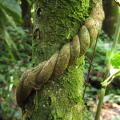DMT-Nexus member
Posts: 24 Joined: 14-Aug-2016 Last visit: 17-Apr-2022 Location: Virtuality
|
Hi y'all! https://ibb.co/9vKz30LIs this acacia? What type if you could tell? Is it useful? Thanks!! <3
|
|
|
|
|

Boundary condition

Posts: 8617 Joined: 30-Aug-2008 Last visit: 29-Nov-2025 Location: square root of minus one
|
Picture does not exist. Try posting again. “There is a way of manipulating matter and energy so as to produce what modern scientists call 'a field of force'. The field acts on the observer and puts him in a privileged position vis-à-vis the universe. From this position he has access to the realities which are ordinarily hidden from us by time and space, matter and energy. This is what we call the Great Work." ― Jacques Bergier, quoting Fulcanelli
|
|
|

DMT-Nexus member
Posts: 180 Joined: 16-Aug-2015 Last visit: 16-Nov-2025
|
XJ9 wrote:I picked the right time to be interested in Acacias. Turns out there's a tree on campus that I've passed many times before, but only today did I realize it was an Acacia. There was a small sign attached to the trunk with the words "Acacia Longifolia, E. Australia". However, the phyllodes seemed more narrow than what I had expected. Can someone here help me shed light on this  ? The tree was no taller than 5 meters tall. EDIT: I'm pretty sure it is A. Longifolia  This tree is definitely NOT A. Longifolia as the flowers are very white and Longifolia flowers are usually very lemon yellow. I have a few ideas on what it might be but also curious as to your approximate location as it resembles a quite micro-endemic species in the same family. OR it could be one of the variations of Floribunda as mentioned above too. In regards to the Floribunda conversation, I've noticed some correlation between whiteness of flower and longer length of phyllodes with higher likelihood of alkaloid activity - and the ones with shorter phyllode and yellower flowers yielding nil.
|
|
|
DMT-Nexus member
Posts: 24 Joined: 14-Aug-2016 Last visit: 17-Apr-2022 Location: Virtuality
|
downwardsfromzero wrote:Picture does not exist. Try posting again. sorry lol my bad Here it goes https://ibb.co/pLMr0WSAnyone knows if this is an Acacia? type? thnx!! <3
|
|
|

DMT-Nexus member
Posts: 7 Joined: 29-May-2019 Last visit: 22-Jan-2025 Location: South Africa
|
Hi All There is an acacia growing by our neighbours that I am not familiar with as a local type of acacia. Might even be type of Mimosa, not sure.... Please see attached some photos of the plant. If it is anything recognizable please let me know. Wondering if it would be worth it to try some extractions on it. Thanks    Allisall attached the following image(s):  20180205_171555.jpg (4,564kb) downloaded 267 time(s). 20180205_171607.jpg (6,167kb) downloaded 268 time(s). 20180205_171619.jpg (3,942kb) downloaded 263 time(s). 20180205_171631.jpg (3,679kb) downloaded 261 time(s). 20180205_171720.jpg (2,286kb) downloaded 263 time(s).
|
|
|

DMT-Nexus member
Posts: 3 Joined: 22-May-2021 Last visit: 23-Mar-2024 Location: Neither here nor there
|
Looks like your plant could possibl be Caesalpinia sappan
|
|
|

DMT-Nexus member
Posts: 394 Joined: 02-Oct-2021 Last visit: 24-Nov-2023 Location: Upside down
|
Hi, I am very new to plant identification. At least when it comes to acacias. About 1-2 years ago I saw a little seedling growing next to my kitchen window. By that time I didn't know much about DMT containing plants, but I was still curious about what species it might be since I first saw it. It is about to flower, so I took a picture of it. Does anyone know what is growing in my garden? Fridge attached the following image(s):  IMG_20211011_141531.jpg (3,549kb) downloaded 224 time(s)....no need to worry...
|
|
|

Boundary condition

Posts: 8617 Joined: 30-Aug-2008 Last visit: 29-Nov-2025 Location: square root of minus one
|
A bit late coming back to this, but it dos look like an Acacia of some kind, I'm just not the one to say exactly which species (and a few, more detailed photos of all the various parts of the plants would aid identification). Are you still out there somewhere, Fuseall? “There is a way of manipulating matter and energy so as to produce what modern scientists call 'a field of force'. The field acts on the observer and puts him in a privileged position vis-à-vis the universe. From this position he has access to the realities which are ordinarily hidden from us by time and space, matter and energy. This is what we call the Great Work." ― Jacques Bergier, quoting Fulcanelli
|
|
|
DMT-Nexus member
Posts: 2 Joined: 16-Oct-2021 Last visit: 28-Mar-2022
|
Hi I meant to post this acacia ID request here. n00b error  For convenience here is the same content below. Appreciate it if anyone can help me confirm the ID of this acacia? thanks!
Hi, I'm very new to this - and have an interest if these are acacia acuminata? Unfortunately I'm a few weeks late to get a good image of the flowers. The images are of two trees. I think they are the same species, but the first three images are of the older tree, the second one is of a younger one nearby. thanks for your help     
|
|
|
DMT-Nexus member
Posts: 1 Joined: 18-Sep-2021 Last visit: 23-Jan-2023
|
|
|
|
DMT-Nexus member
Posts: 1 Joined: 26-Aug-2022 Last visit: 26-Aug-2022 Location: Brisbane
|
|
|
|

DMT-Nexus member
Posts: 2229 Joined: 22-Jul-2011 Last visit: 02-May-2024 Location: in the underbelly of the cosmic womb
|
Wow! There are some very interesting specimens posted here in the past couple pages .. I really feel like there must be some kind of sub species with the genetics of both longifolia and floribunda ... there seem to be a lot of crossovers in taxonomy.. particularly in a lot of trees grown in urban areas, but since i am not really qualified to say.. its a strong gutted hearsay for now  .. both longifolia and floribunda seem incredibly variable in appearance.. which makes sense considering they are so widely cultivated in in proximity with species they may not have been in their natural habitat Woolmer.. I'm certain that is broad phyllode acuminata.. acuminata is so widespread though that within the three well known types there is obvious variation in taxonomy area to area.. It wouldn't surprise me if botanists revise acuminata and its sub species in the future and I think Longifolia and Floribunda are well overdue for the same. Its amazing in general how much a species can differ from area to area
|
|
|

DMT-Nexus member
Posts: 1111 Joined: 18-Feb-2017 Last visit: 12-Jul-2024
|
I came across this what looked like an acacia. Conditions: coastal, volcanic soil, subtropical climate, northern hemisphere, December. Little annual rain, but high humidity. The shrub was maybe 1 meter tall and there were a few of them within close proximity of one another, between that height and small seedlings a foot tall. Jagube attached the following image(s):  aca1.jpg (388kb) downloaded 116 time(s). aca2.jpg (290kb) downloaded 117 time(s).
|
|
|

DMT-Nexus member

Posts: 856 Joined: 15-Nov-2009 Last visit: 03-Feb-2025
|
I'm not 100% sure but it does resemble Acacia saligna. The consciousness of plants is a constant source of information for medicine, alimentation, and art, and an example of the intelligence and creative imagination of nature. Much of my education I owe to the intelligence of these great teachers. Thus I consider myself to be the “representative” of plants, and for this reason I assert that if they cut down the trees and burn what’s left of the rainforests, it is the same as burning a whole library of books without ever having read them.
~ Pablo Amaringo
|
|
|
DMT-Nexus member
Posts: 1 Joined: 20-Dec-2022 Last visit: 20-Dec-2022 Location: isb
|
It sounds like you have identified a flowering acacia tree that appears to be Acacia obtusifolia, based on its flowering season and location. Acacia obtusifolia, also known as the blunt-leaved wattle or the round-leaved wattle, is a species of acacia native to Australia. It is known for its bright yellow flowers, which typically bloom between November and December in New South Wales, and its round, glossy leaves.
|
|
|

○
Posts: 403 Joined: 23-Aug-2015 Last visit: 18-Feb-2025 Location: Iran
|
Iran, fars, noor abad Acacia Nilotica (i guess? correct me if im wrong, this is my first acacia ID) Espurrr attached the following image(s):  754A8A6E-8E6F-4B26-AA90-091E3BD417CA.png (17,032kb) downloaded 110 time(s).
|
|
|

DMT-Nexus member
Posts: 32 Joined: 28-Feb-2022 Last visit: 25-Jan-2024 Location: Australia
|
Found this one growing today, there are a few smaller ones. Very large leaves, coastal NSW. I've gotta find a good place to look through and find out what species it would be. EDIT: Closest species seems to be falcata wattlez attached the following image(s):  foto_no_exif.jpg (5,498kb) downloaded 97 time(s).I <3 WATTLEZ
|
|
|

DMT-Nexus member
Posts: 80 Joined: 31-Jan-2023 Last visit: 04-Feb-2025 Location: New Zealand
|
Hi, any ideas what type of Acacia this is?  Phyllode length 95mm, width 7mm. 3 main phyllode nerves. Flowers in groups of 5. Quite large spacing between phyllodes... CheeseCat attached the following image(s):  1.JPG (135kb) downloaded 72 time(s). 2.JPG (96kb) downloaded 73 time(s). 3.JPG (91kb) downloaded 74 time(s).
|
|
|

DMT-Nexus member
Posts: 2229 Joined: 22-Jul-2011 Last visit: 02-May-2024 Location: in the underbelly of the cosmic womb
|
JefFlux wrote:XJ9 wrote:I picked the right time to be interested in Acacias. Turns out there's a tree on campus that I've passed many times before, but only today did I realize it was an Acacia. There was a small sign attached to the trunk with the words "Acacia Longifolia, E. Australia". However, the phyllodes seemed more narrow than what I had expected. Can someone here help me shed light on this  ? The tree was no taller than 5 meters tall. EDIT: I'm pretty sure it is A. Longifolia  This tree is definitely NOT A. Longifolia as the flowers are very white and Longifolia flowers are usually very lemon yellow. I have a few ideas on what it might be but also curious as to your approximate location as it resembles a quite micro-endemic species in the same family. OR it could be one of the variations of Floribunda as mentioned above too. In regards to the Floribunda conversation, I've noticed some correlation between whiteness of flower and longer length of phyllodes with higher likelihood of alkaloid activity - and the ones with shorter phyllode and yellower flowers yielding nil. I have seen some longifolia that are not quite 'white' but are closer to white than yellow.. I think is a highly variable species like Floribunda.. and am personally convinced that they hybridize. Longifolia and Floribunda both seem to stray beyond the boundaries of their agreed taxonomy.. the literature is pretty generous in the leeway it gives some of these species.. but there are for sure exceptions. I am surprised there aren't any recognized sub species of Floribunda or Longifolia (excluding Sophorae)
|
|
|

In Silence I Been
Posts: 137 Joined: 14-Sep-2018 Last visit: 16-Mar-2024 Location: Knowhere
|
Dear Nexians, I also need your expert identification and sleuthing skills. Been trying to source a good acacia plant species for DMT extraction. Would like to know if anyone has used, is using, or thought about using Acacia erioloba (= Vachellia erioloba). Pics added to this post. Is there DMT in the bark or roots? Or is this a dead end track for me. Thank you kindly. PsyloCiBeen attached the following image(s):  download (1).jpg (11kb) downloaded 60 time(s). download.jpg (9kb) downloaded 59 time(s). mama matrix most mysteriousIn the gforce of the carrier wave when my ego starts melting away I truly realize that I am who I am and yet everything that I say and say I did is an illusion. Any similarities in any name, form or experiences to a human being (past, present or future) is purely coincidental and no harm was intended first do harmalas
|